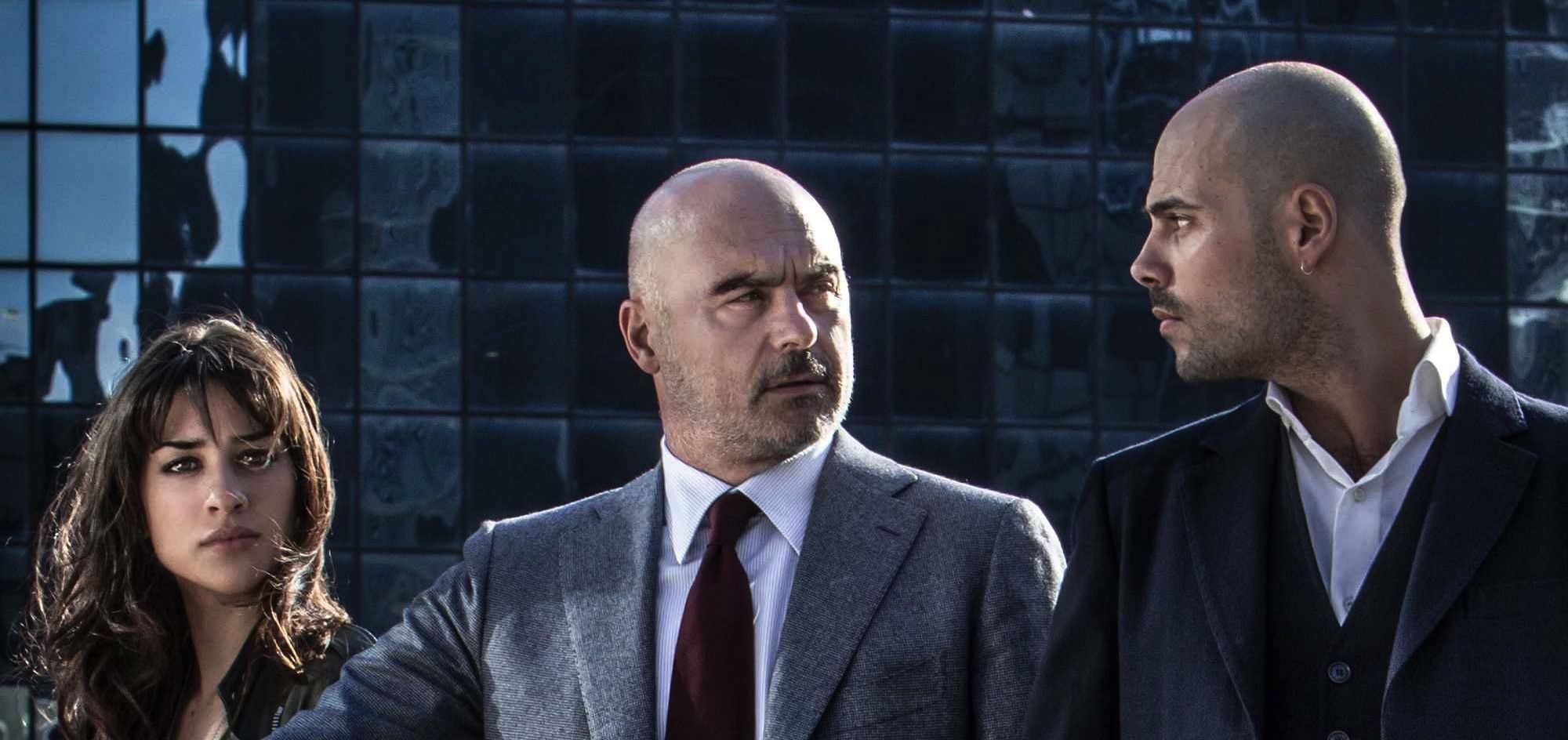
The slick, snarling nest of corruption and organised crime which forms Napoli, Italy’s most notorious criminal city, has received a range of film treatments over the years, with Matteo Garrone’s neorealist genre reinvention Gomorra (2008) recent years’ benchmark. While Edoardo de Angelis’ Perez doesn’t come close to that film’s spiralling portrait of endemic violence, it is ultimately a worthy addition to the mafiosi pantheon. Hampered at times by unwieldy dialogue and unnecessary attempts to emulate the lurid spectacle of many 2000s gangster films, it’s not a film that offers a revolutionary perspective on Neapolitan law and order, but instead, by focusing on its tortured protagonist and namesake, middle-aged public defender Demetrio Perez (Luca Zingaretti), injects the often emotionally sterile criminal underworld with a note of humanity.
The film’s overarching mood is best described as enigmatic – the score oscillates between paranoiac piano lines and more muted string-section fillers. Its camera is insistently mobile, frequently deployed to track vertically up and down skyscrapers to match the movement of elevators and people, and even in the kind of terse conversation-driven scenes which usually demand static shot/reverse shot cutting, de Angelis has the camera quiver and refocus around his characters. Demetrio’s job defending the hopeless, combative, and obviously guilty, which is underpaid and totally thankless, and tetchy relationship with his student daughter Tea (Simona Tabasco), in a relationship with a brooding thug (Marco D’Amore), seem at first to echo the drab legal world he inhabits, at odds with the tension, uncertainty, and discomfort inculcated by these techniques. Once the outline of a narrative is drawn, though, and Perez’s turmoil is compounded when he’s hired to defend Luca Buglione (Massimiliano Gallo), a higher-ranking mobster looking to dish up as much dirt on the boyfriend as possible in exchange for immunity, he finds himself in a triple bind – between his reputation, his daughter, and his safety – that turns the film’s stylistic oddities from inscrutable to inspired. The tortuous, untrusting atmosphere evoked by the camerawork, music, and incessant reflective lighting becomes an effective metaphor for Perez’s situation.
Scattered through its ninety-odd minutes, though, are several sequences that fail to maintain the intensity of this smart setup, mainly in the form of some awful dialogue. Some stilted lines border on the comical – rebuffed by Perez on first attempting to speak with him due to the lawyer’s ‘busy day’, Buglione points out that “there are 24 hours in a day. Five minutes equals 0.3%”. Apparently Perez is suitably impressed by this feat of arithmetic, because Buglione becomes his client without much further ado. Another exchange between the two characters includes the following Pulitzer-worthy prose: “I’m in trouble? You’re in trouble.” “So are you.” In fact, it’s Buglione’s characterisation that’s the main offender in terms of the film’s other weakness, its apparent desire to spice up the narrative with forced elements of over-the-top ‘crime-thriller’ plot stylisation. The supposed hardened gangster’s penchant for horn-rimmed hipster glasses and purple turtlenecks is totally inappropriate for the sombre, realist character palette de Angelis employs elsewhere. There are a couple of other sequences clearly designed to mimic the Lock, Stock school of crime film to which this one absolutely doesn’t belong, most egregiously a staggeringly tasteless cutaway to a supposed mafia killing involving a mute prostitute and a vibrator-bomb, which amounts to no more than an excuse to up the film’s tit-count.
It’s to the film’s credit that, aside from the above clunkers, its narrative development does continue to provide thoughtfulness and surprise despite its evolution into a more recognisable thriller format. The climax relies on little more than Zingaretti’s performance for its fireworks rather than much in the way of actual pyrotechnics – and indeed, his ability to express all of Perez’s internalised trauma is the main success of the film as a character piece. As a genre film, it’s more uneven, seemingly unsure whether to become an easy-option Grisham thriller, or a more complex legal-criminal exploration. A film like Perez is probably most important as a document of the move towards examination of the law – rather than the lawless – that is becoming apparent in both festival films and blockbusters. Films like GoodFellas have been replaced with ones like Zodiac and Once Upon a Time in Anatolia, which ask: who watches the watchman? In Perez, this kind of moral torpor is addressed at a somewhat superficial level, and with only moderate success; it does, though, make for compelling viewing.
